Preserving vegetables from the garden can occupy a significant part of the gardening season. When you invest that much time you want to make sure that your family will eat them. Use these tips to decide the best way to preserve your garden vegetables the best way.
Rhubarb is one of the first plants that come to life in my spring garden. I have a lot of rhubarb plants because they grow well in my zone 3 garden. When they need to be divided every third year, I just move the new plants to another bed and expand the growing area. But rhubarb is not an easy vegetable to eat. Its sour and quite strongly flavored.
How much rhubarb can one family eat?
Full transparency: I used to waste a lot of rhubarb by chopping it up, freezing it in little Ziploc bags, then tossing it in the compost the next year, to make room for the new harvest. Even though it felt like I was being wise, preserving the rhubarb for winter, it was all wasted because I didn’t use what I had put by, in meals throughout the year.
But then my perspective changed, I started using rhubarb in more recipes, in season. Rhubarb is the perfect vegetable for summer.
Rhubarb is a great herb to quench the thirst — high in electrolytes that help the body cope with the heat. Its sour taste is a signal that rhubarb is good for the liver, cooling, and relaxing — the perfect herb for hot summer days when you are working in the garden or walking on the trail. (If you, too, have an abundance of rhubarb, grab my recipes for rhubarb shrub and rhubarb ice pops to cool off this summer)
I do still freeze rhubarb and use it in baking and fruit crumbles, but I don’t need to freeze.
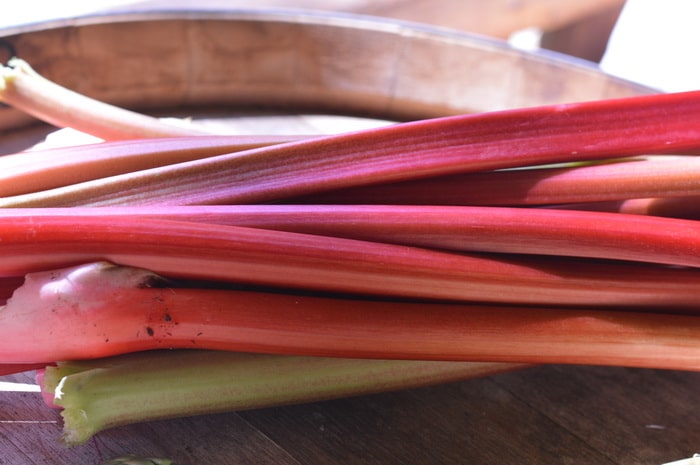
Tip number 1:
Use spring and early summer fruits and vegetables in season
Many fruits and vegetables are best suited for the time they are harvested. Fruits and vegetables that are harvested in late spring and early summer, like asparagus, rhubarb, lettuce, and radishes, or strawberries, haskaps, and cherries have a slight sour or bitter flavor. Sour and bitter flavors improve digestion and promote elimination.
Remember being told as a child, if you eat all those cherries you’ll be running to the bathroom? Those early summer fruit improved sluggish digestion, removed toxins and helped the body heal itself, after a long winter. This action triggers the body’s elimination reflex. Now you know!
So use those early summer fruits and vegetables as they come in from the garden. Instead of blanching them and putting them in the freezer, add them to soup, stews, pizza toppings, salads, or crumbles, yogurt, shrubs, and smoothies, as appropriate, while they are fresh and abundant.
Summer fruits and vegetables tend to have abundant water and don’t dehydrate well. When canned they often turn mushy. Plan them into your meals as ice pops, shrubs, smoothies, salads, and other fresh meals. Use them in sauces, jams, jellies, pesto, hummus, or pate, to take advantage of this natural trait.
If you freeze them to eat later, plan to use them up quickly from the freezer. They are lower in natural sugars and lose texture with long storage.
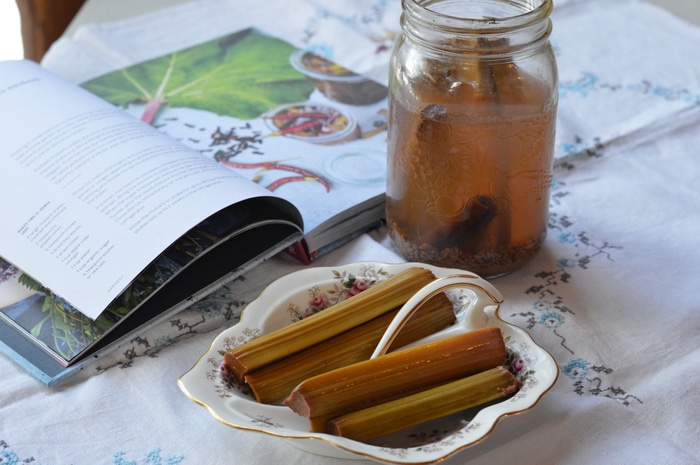
Tip number 2:
Preserving vegetables through fermentation is the natural way to preserve vitamins and minerals
When you garden the harvest often comes in, in drips and drabs. In many cases fermentation is the ideal way to preserve this food so that it can be used in winter. Fermentation increases the bio-available vitamins in food and supports our own microbiome.
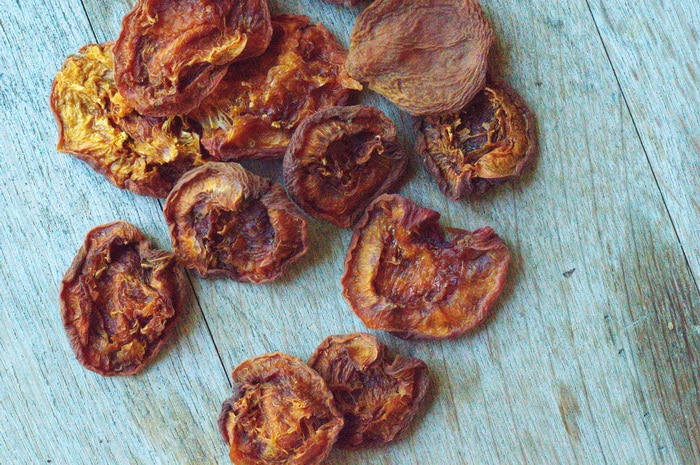
Tip number 3:
Dehydrated fruit and vegetables can last 20 years or more if stored properly in a cool, dry place
Dehydrating fruits and vegetables, herbs, weeds, and even mother cultures allows you to remove the water from food while preserving the nutrients and fiber. Water causes rapid spoilage, so when you remove the water food lasts longer. Dehydration is the oldest food preservation method.
I like to dehydrate because it allows me to use food that might otherwise be wasted by drying it. You can dry food in small batches or in full cases of up to 20 pounds depending on the size of your dehydrator. If you don’t have a dehydrator you can use an oven for drying or even sunlight. Even lean meat can be dehydrated and used for camping. Fatty foods do not dehydrate well, though, so reserve those for other methods of food preservation.
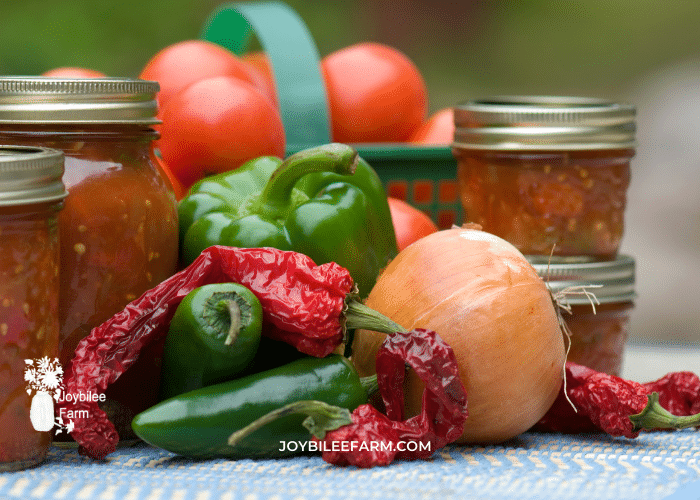
Tip number 4:
Preserving vegetables in the form that your family likes best
If you regularly buy frozen vegetables, don’t try to can the same vegetables and hope they will taste the same. If you regularly buy a vegetable in a can, you can safely can it and know you will actually use it.
For instance, my family regularly purchases canned tomatoes. Every fall we also go to a you-pick farm and pick about 200 pounds of tomatoes and 30 pounds of peppers for canned tomato sauce. I make spicy tomato sauce, medium spicy salsa, and pizza sauce and can it in quarts and pints for winter. We always run out before winter is over.
On the other hand, one year my garden produced an abundance of snow peas. They were yummy fresh off the vines and my kids ate a lot of them standing in the garden. I canned about 14 pints. My family didn’t like mushy snow peas. Blech.
The following year I tried freezing the snow peas. My family didn’t like mushy, cooked-after-freezing snow peas, either. A lot of our snow peas ended up in the compost pile. Now I just plant enough snow peas for fresh eating. That’s the form my family prefers.
If your family likes canned vegetables you’ll need to invest in a pressure canner to safely can these and prevent botulism spoilage. If your family prefers frozen vegetables and fruit, don’t force yourself to learn how to can because you “think you should.”
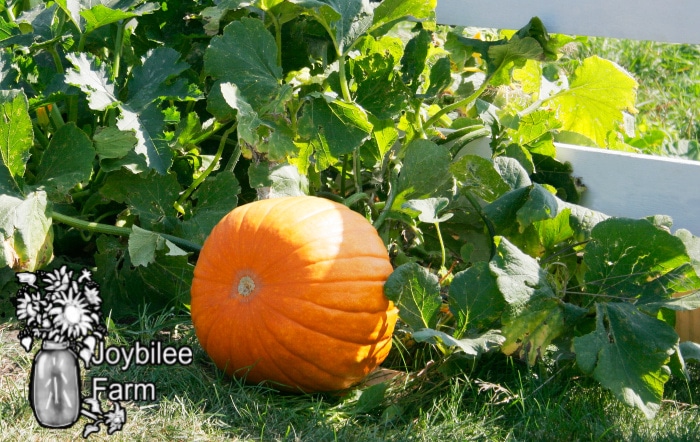
Tip number 5:
Grow storage vegetables and take JOY in bringing in the harvest
Traditionally bringing in the harvest and preserving vegetables for winter was a season of great joy and celebration. It meant the difference between life and death for communities. Vegetables and fruits that store well don’t need any more work to preserve them, than providing a cool spot in your home.
Even if you don’t have a garden or land to grow your own food, learning to preserve food in season, when the price is lower, can ease your budget and give you greater food security.


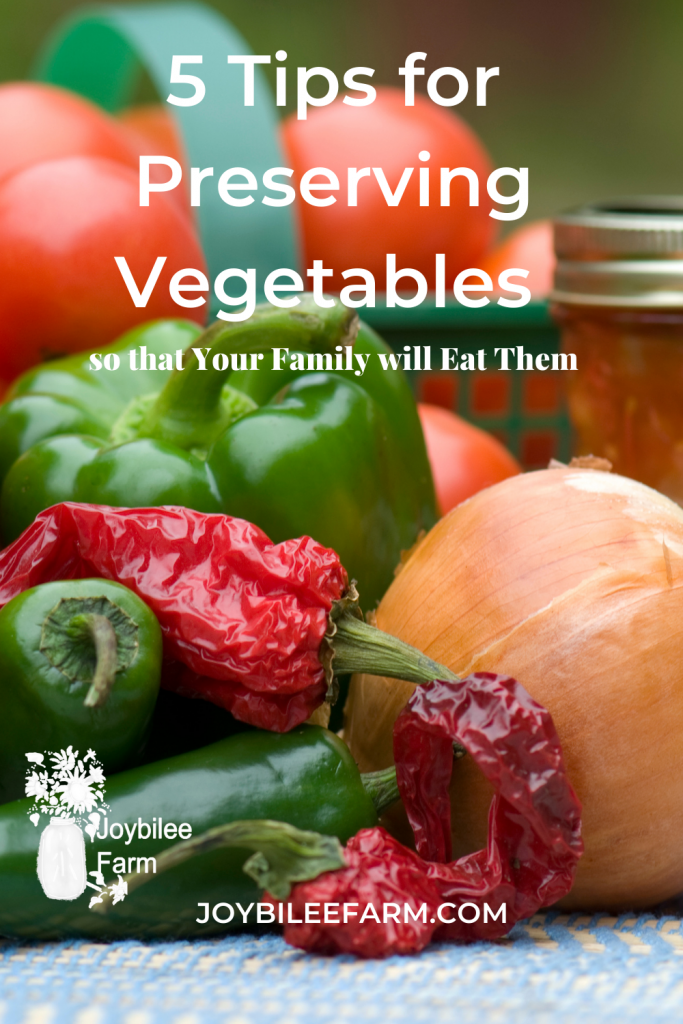

Leave a Reply